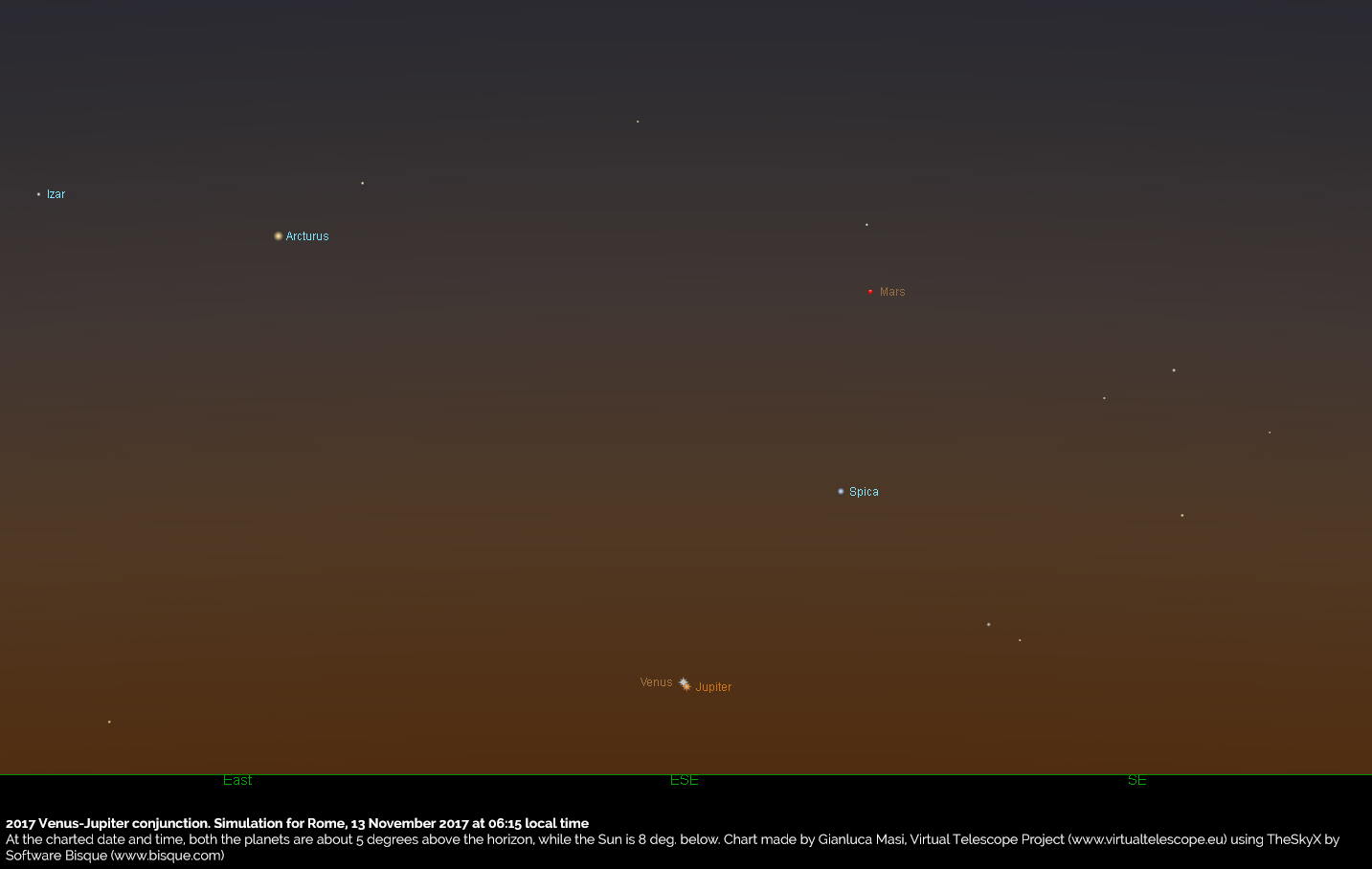You Don’t Wanna Miss the Spectacular Venus-Jupiter Conjunction Early Morning on Nov. 13
For those who really enjoy watching the movements in the sky, here’s a special one for you – the conjuction between Jupiter and Venus will be visible, but only if you wake up early in the morning. This conjuction between these planets is coming closer than 0,3 degrees and will form a beautiful sight also visible at dawn.

Planets as we know them, they are also orbitating around the sun as much as our Earth does, but it’s really quite the sight to see when the planets meet along their way, and form a beautiful motion in the sky, and it’s especially interesting if bright planets are involved and are very close. As their name says (“Planets” comes from the ancient Greek ἀστήρπλανήτης astēr planētēs, or πλάνης ἀστήρ plánēs astēr, which means “wandering star“).
Venus is by far the brightest object in our planetary system (after the Sun and the Moon, it is the 3rd brightest object in the sky), and Jupiter takes almost the second place, it’s really mesmerizing when the two of them share the sky together as we know it, as two objects shining above the western (at sunset) or eastern (at dawn) horizon.
This is not the first “planet kiss” of Venus and Jupiter as they have conjucted before. On 1st July 2015 at sunset, Venus and Jupiter have shown together and an online observation was made by The Virtual Telescope Project.
On 27th Aug. 2016, the two planets made a lovely sight again at sunset, their closest conjunction we will see for a few decades: they reached a minimum angular separation of less than 4′ arcminutes, that is only 1/8th of the angular size of the lunar disc.
Next 13th November, this time at dawn, Venus and Jupiter will meet again, reaching a minimum angular distance of less than 0.3 degrees, about 1/2 of the apparent size of the Moon. It’s going to be an easy sight by naked eye, only if you have a full access to a clear Eastern horizon: both the planets will be only a few degrees above the horizon, while the sky will be getting brighter and brighter, with the Sun ready to rise. A binocular can help locating both the planets, and will give you a rather pristine view.

The map at the beginning of this post also shows a few bright stars, as well as planet Mars, sitting about 25 degrees apart.
The next Venus- Jupiter conjunction will be on 22nd Jan. 2019, it will not be as close and spectacular as this one, but we assure you that no matter how close or distant they are, seeing the meeting of two planets is still a sight that we want to share with our friends, not just keep it to ourselves.
Source: The Virtual Telescope
Photo Credit: Space
